Exide 12V AGM Batteries Bruksanvisning
Exide
Batteriladdare
12V AGM Batteries
Läs gratis den bruksanvisning för Exide 12V AGM Batteries (13 sidor) i kategorin Batteriladdare. Guiden har ansetts hjälpsam av 17 personer och har ett genomsnittsbetyg på 4.4 stjärnor baserat på 9 recensioner. Har du en fråga om Exide 12V AGM Batteries eller vill du ställa frågor till andra användare av produkten? Ställ en fråga
Sida 1/13

Instructions
for use
and safety
12V AGM (VRLA)
(Valve Regulated Lead-Acid)
Batteries
The symbols on the battery indicate the safety
warnings. Batteries not handled and used
correctly can be a danger – read and follow
carefully the instructions in this document, on
the battery and in the vehicle handbook in full
prior to carrying out any work on the battery.
Lead acid batteries should only be used for the
purpose for which they are designed. Improper
uses can be dangerous and can create a safety
risk. Batteries are heavy – take care lifting and
carrying them. In case of battery breakage,
immediately wash any spillage with water, soapy
water or an acid neutraliser such as baking soda.
VRLA batteries can eventually release small
amounts of an explosive gas mixture during
use, storage and charge, so air-tight containers
are not recommended. For battery banks, a
proper grounding is recommended to prevent
electrostatic charge generation.
A. STORAGE, HANDLING and INSTALLATION.
Batteries are filled with acid and should be
protected against any impact able to break
its case. Batteries should have at least one
terminal covered to prevent accidental shorts.
Store in a cool, dry, well-ventilated place. Do
not store where sparks may be generated.
AGM (VRLA) batteries contain only a limited
amount of acid. It is important to make sure that
they are not exposed to temperatures above 60°
during use and installation. Temporary peaks of
up to 80°C can be tolerated for limited periods
not exceeding 3 hours.
B. CONNECTING/DISCONNECTING. Switch
off all vehicle electrical components. Wear
goggles and suitable protective clothes,
including rubber gloves. When removing a
battery, disconnect earth lead (usually negative)
first. Avoid short circuits through careful use of
any metal tools. Clean battery tray and clamp
new battery securely; do not over-tighten. Clean
terminal clamps. On reinstalling, ensure correct
connection to the live (usually positive) terminal
first (any incorrect connection can damage
sensitive electrics). Check connections are tight,
and lightly grease terminals with petroleum jelly.
Where available, fit terminal cover to live (usually
positive) terminal to prevent shorts. Ensure
terminals and connectors will be clear of closed
compartment cover. Check that protective
terminal caps are covering all unused terminals.
C. MAINTENANCE. VRLA batteries don’t
require any water addition. Ensure the battery
and connections are kept clean and dry. Use an
antistatic damp cloth to wipe the battery down
to prevent electrostatic sparks. Do not open or
remove vents. Never add acid or distilled water.
The battery may need recharging when voltage
drops below 12.4V (50% state of charge) as
described in D.
D. CHARGING (using charging devices). Sparks
can cause explosions, especially during and
after charging. Only charge in a well-ventilated
area. Disconnect and connect as described in B.
Only use direct current (DC) automatic regulated
chargers approved for VRLA products. Follow
the charger instructions. With charger not
connected to the mains, connect (+) cable to
(+) battery terminal first and then (-) cable to
(-) battery terminal. Switch charger on from as
remote a position as possible and, after charging,
switch off before disconnecting. An optimised
charging method (D1) is recommended, but
special applications could require other
particular procedures as follows (referenced to
25°C ± 10ºC).
D1. Charging: Initially charge at 10–20A of
constant current until reaching 14.4V, followed
by a regulated Voltage charge at 14.4V without
current limitation until supplied current is below
2% nominal Capacity; finish at constant current
of 2% nominal Capacity during 2h. During all
charging, battery temperature can’t exceed 50°C.
D2. Float Charging only for Stationary: Apply
a floating voltage of 13.8V during the whole
charging time and consider applying D1 once
per month. Never apply this method to deeply-
discharged batteries.
D3. Fast Charging only for Emergencies: Use
a max. current of 50% nominal Capacity for
periods shorter than 1 hour. In all cases voltage
must be limited to 15V maximum. Never apply
this method to deeply-discharged batteries.
D4. Recovering from deep discharge. When
battery voltage is below 12.1V, proceed as
described in D1 but prolong total duration for
step one and two up to 48h. During all charging,
battery temperature can’t exceed 50°C.
E. JUMP STARTING FOR CARS. This is not
a recommended procedure. If it is deemed
essential, follow the instructions in the car
manual.
F. TEMPORARY STORAGE. If the battery is
not required for an extended period it should be
disconnected as in B (check that no damage will
be done to the equipment by long periods without
power), carry out charge as in D and store as in
A. Before refitting, ensure voltage is above 12.4V.
Refit as in B. If equipment requires power during
storage, keep the battery connected but check
the voltage monthly and recharge if it drops
below 12.4V.
G. DISPOSAL. Old batteries should be recycled
through a registered scheme. The supplier of
the new battery will help to you to find such a
scheme. We advise that this is the best way to
correctly dispose of failed batteries.
WARRANTY. Products are warranted against
faulty workmanship and/or material according to
applicable law only. Proof of purchase is required
to claim. Warranty does not cover incorrect
fitment, inadequate charging, accidental
damage or faults on vehicle electrical systems
and other forms of abuse. A battery replaced
under warranty is only warranted to the end of
the original battery warranty period. Batteries
left for long periods out of use will fail owing to
neglect. Distributed by EXIDE Technologies, Unit
2 Pisces, Mosley Road – Trafford Park, M17 1PF,
Manchester, UK.
Note operating instructions
and retain with vehicle
handbook.
Always protect eyes when
handling batteries.
Keep batteries away from
children.
No smoking, naked flames
or sparks near batteries.
Explosion hazard.
Batteriesemit an explosive
gas mixture into the air.
Corrosive hazard.
Batteryacid, if spilled, is
corrosive to skin, clothes
and goods.
Valve-regulated lead-acid
battery. Never manipulate
to open cells.
Batteries content lead
and should be recycled.
Neverdispose in domestic
waste.
Batteries contain lead
andshould be recycled.
Never dispose as domestic
waste.
GENERAL RECOMMENDATIONS FOR 12V VRLA (VALVE REGULATED LEAD-ACID) BATTERIES
English
www.exide.com
V2.06-14
Produktspecifikationer
| Varumärke: | Exide |
| Kategori: | Batteriladdare |
| Modell: | 12V AGM Batteries |
Behöver du hjälp?
Om du behöver hjälp med Exide 12V AGM Batteries ställ en fråga nedan och andra användare kommer att svara dig
Batteriladdare Exide Manualer

14 September 2024

14 September 2024
Batteriladdare Manualer
- Proxxon
- Sandberg
- Cobra
- Fronius
- Hama
- Walter
- Envivo
- Basetech
- Tronic
- QVS
- Sven
- Ikelite
- Pioneer
- NEP
- Xenteq
Nyaste Batteriladdare Manualer
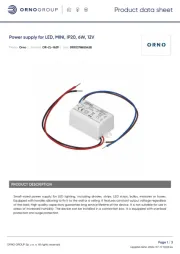
15 Oktober 2025
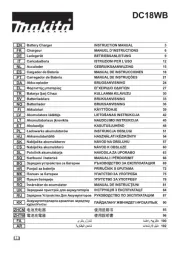
12 Oktober 2025
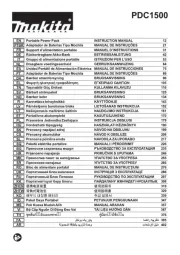
12 Oktober 2025

12 Oktober 2025

12 Oktober 2025
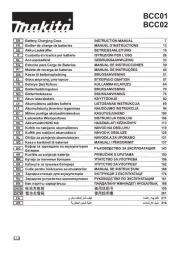
12 Oktober 2025
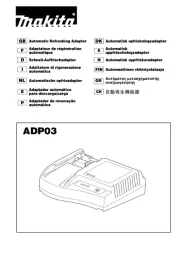
9 Oktober 2025
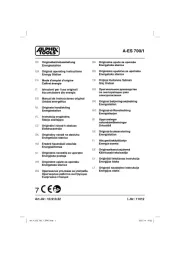
5 Oktober 2025
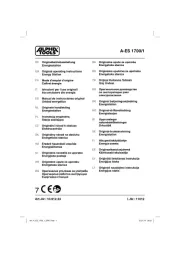
5 Oktober 2025
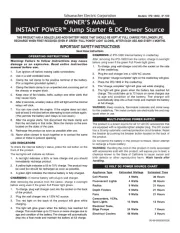
3 Oktober 2025